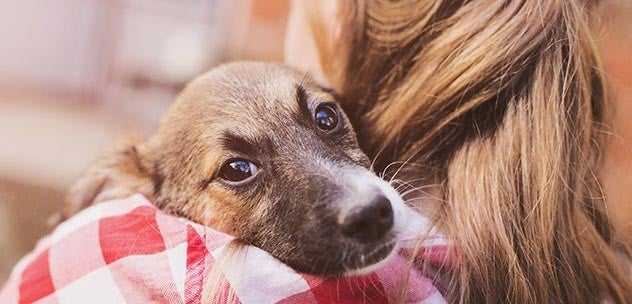How to Organize a Local Pet Adoption Event

Petfinder’s mission has always been to find forever homes for every adoptable pet. Many of you share this same goal and are looking for ways to support the pet adoption community. We believe that one of the great ways to promote animal welfare, whether you are a passionate individual or a local adoption organization, is to host an adoption event. To ensure your event is set up for success, Petfinder has prepared some tips to help you plan and execute a local adoption event in your community.
SET A GOAL, PURPOSE, AND BRANDING

The most important step is establishing a goal for the event. It may be setting a specific number of pet adoptions, raising money for a local shelter or rescue group to help ensure they can continue their adoption efforts, or a combination of both. For individuals, you will need to partner with a local pet adoption group. Petfinder.com has a handy tool to help you find great organizations in your area that you can partner with. Whatever your goal may be, it is important to establish this early so that as you begin to plan and build a team, everyone has a clear understanding of how to measure success.
Once a clear goal and purpose are established, coming up with a fun or unique theme or brand for the event is a crucial step in ensuring that all promotional communications for the event are consistent. This will be very important in avoiding any possible confusion between other similar events that may take place in your area. It also makes it easy to visually recognize any information that is shared about your event in the hopes of catching people’s eye.
PLAN
Once you have laid the ground work for the event, you’re ready to dive into the details of planning the day. The earlier you can get started, the better prepared you will be to handle any hurdles that may pop up.
- Pick a date and location. Do your research and ensure your event date does not conflict with any other events in your area.
-
Set a budget. There will be numerous expenses you’ll need to account for, including but not limited to:
- tents, tables, and chairs
- food and drink
- sound system
- decorations
- supplies for the adoptable pets, such as water bowls, crates, food, etc.
- cleaning supplies
- city permits (depending on where the event is held)
- marketing materials like signs, flyers, and digital advertising
- and more!
Don't be shy in reaching out to local companies to see if they can support your event through product or service donations to help you keep costs as low as possible.
- Build a team. You’re going to need so be sure to staff up with an enthusiastic team. Outline rolls and responsibilities to ensure everyone clearly understands how their contributions will lead to a successful event. Because there will be animals at your event, it is also crucial to ensure there are properly trained staff to safely and knowledgeably handle any animals involved.
- Stay in touch. For everyone’s sake, it will be best to hold regular meetings so that your team can fill you in on their progress, and you can highlight any new hurdles that need to be addressed. Then, update your plan and keep moving forward.
PROMOTE
The last part of the planning process is, of course, to create a promotional strategy for the event. Luckily, we live in a digital world where we can take advantage of tools like social media to connect with larger audiences than ever possible before. However, some tried-and-true techniques like paper fliers or brochures can still go a long way. Here are a few ideas to get you thinking about promotional opportunities:
- Take advantage of social media. Use all the different platforms to reach the different crowds. Perhaps you can create an incentive program where sharing or retweeting messages earns you free entries into an event raffle. The more you can get others to spread your message for you, the easier your job will be.
- Connect with local supporters. Most local vet clinics, pet supply stores, groomers, etc. will be happy to support your event. Ask if you can hang a flier in their window or pin one to their community board. You can also request to leave a stack brochures about your event on their front counters. There is also an opportunity to tap into their social media followings by drafting example posts and tweets for them to use. You can even include some imagery they can use, making it painless for them to share with their communities, further expanding your digital reach.
- Partner with a local celebrity or ambassador. St. Louis was able to partner with Andy Cohen for their Beggin’ Pet Parade. This partnership can drastically expand who you will reach if the local celebrity will promote your event on their social channels. If you can’t find a local celebrity, there are often local bloggers or pet enthusiasts that would be happy to volunteer an article or be an ambassador for your event.
COLLECT
The ultimate goal is supporting pet adoption. Adopting a pet is one way of doing that, but for those that may not be in the position to add a pet to their family, donations (both time and money) are a great way to lend support. It’s important to have a simple plan for monetary donations. Raising money for a local shelter or rescue group can allow them to continue to provide the best possible care for the pets in their adoption program while they await a forever home. Encouraging donations through things like raffles, 50/50 drawings, or silent auctions can be a complementary piece to any adoption event.
AFTER THE EVENT
- Stay in touch. Be sure to follow up with everyone that attended and everyone that donated their time, services, or money for the event. Thank them for their participation, and let them know the impact they made. When possible, share with them how many pets were adopted and how much money was raised. This will build community support, not only for next year’s event, but for the adoption cause in general.
- Optimize. Meet with your team after the event and discuss the successes and failures of the event. While focusing on everything that went great is important, it is crucial to learn where things can be improved to ensure the next event is even more successful.